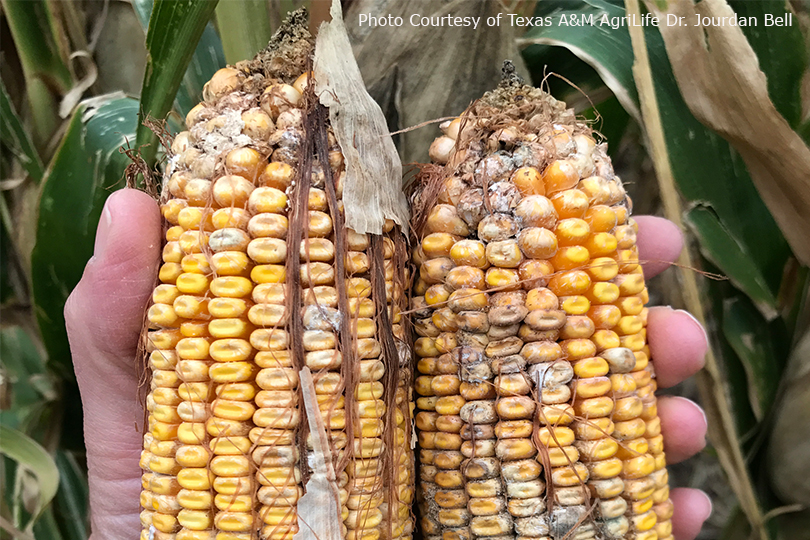By Jessica Domel
Multimedia Reporter
Panhandle farmers who suspect fumonisin, or mycotoxin, in their corn are urged to contact their crop insurance agent as soon as possible.
It’s important to begin the loss claim process now, according to David Gibson, executive director of Texas Corn Producers.
“Get in touch and ultimately file a potential loss claim,” Gibson said. “Then, they should wind up having an adjuster come out and determine if they’re going to pull samples in the field prior to harvest or if they’re going to work with the grain elevators, feedlots or other places they deliver their corn to get samples taken.”
Starting the process will qualify farmers for any potential loss that crop insurance might cover due to fumonisin, which can trigger a quality loss.
“Some producers have had a reduction in price by $1 a bushel. We’ve had some reports of up to $2 a bushel discount on some of their grain,” Gibson said. “If that occurs across a whole field, $1 a bushel is getting close to a 30 percent reduction off of the current market price, because we’re sitting somewhere around $3.70 to $3.90 for our current cash price per bushel.”
Fumonisins are toxins produced by fusarium fungi that occur in nature. They’re a part of the mycotoxin family, which also includes aflatoxin.
“They’re caused by natural soil-borne fungal diseases that are in all of our soils that trigger and usually are pronounced in their grain once the grain’s harvested,” Gibson said.
Fumonisin isn’t a new issue, but it is more prevalent in the Texas Panhandle and in Oklahoma this year due to a dry, hot July and wet August.
“We have harvested probably about 25 percent of the crop up here on the High Plains from the Lubbock area and north to the Oklahoma line in the Panhandle. It’s been pretty widespread,” Gibson said. “I’d say we’ve seen it in at least some level above normal in at least half of the crop up to this point.”
Farmers can’t detect fumonisin just by looking at corn, but if there’s mold growing on the ear or the kernels are discolored, there’s a chance a mycotoxin is present.
“Once they run a chemical test, it will show up,” Gibson said. “There are a few visual symptoms to tell you, but without running an actual chemical test, you don’t know what you have.”
All corn deliveries are tested for fumonisin and are subjected to regulatory and quality processes.
“The Food and Drug Administration has these tolerances that they enforce here in Texas by our Office of the Texas State Chemist and monitors feed control. They’re making sure, and have plans in place to ensure, the levels that can cause harm to animals will not be fed,” Gibson said.
Quality standards also regulate what winds up on store shelves.
“Whether it’s meat products, food products, milk or others, they’re approved by FDA,” Gibson said. “They’ve been thoroughly tested all along the process to make sure they’re safe for human consumption.”
The majority of corn grown in the Texas Panhandle and High Plains is used for livestock production.
Additional information on fumonisin can be found on the Texas Corn Producers website.

